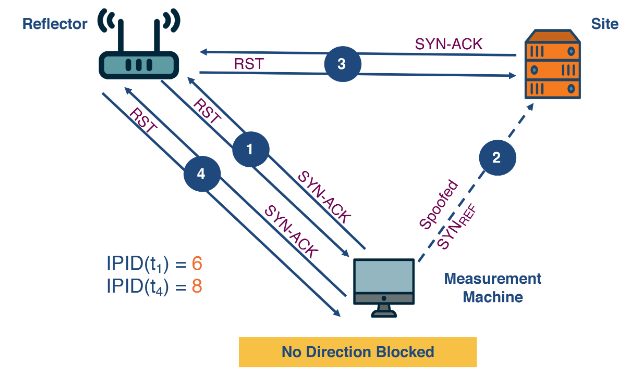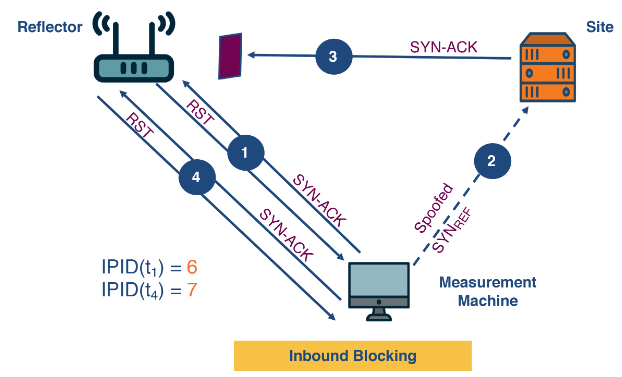Angur
This is a system that monitors for censorship through connectivity disruptions. It uses two internet protocols:
- IP ID: This uses the IPv4 field for the packet ID. Which is a 16-bit field used to identify packets that are fragmented. (There is an analogous IPv6 field on the fragmentation extension header - though in this protocol you should not fragment packets.) Normally servers keep a count of the packets they have sent and increment the IP ID by one for each subsequent packet.
- TCP RST: When an unexpected TCP such as a TCP SYN-ACK packet without a previous SYN is sent to a host, it sends back a reset packet. (This makes some assumptions about complex behaviours not happening.)
The system aims to detect if filtering exists between two hosts, a reflector and a site. A reflector is a host which maintains a global IP ID. A site is a host that may be potentially blocked. To identify if filtering exists, it makes use of a third machine called the measurement machine.
There are two techniques it will then use:
- Probing: The measurement machine send a SYN-ACK message to the reflector and records the IP ID of the RST message it sends back.
- Pertubation: The measurement machine sends a spoofed packet to the site with the source IP being the reflector. The site will respond to the reflector with a SYN-ACK. Then the reflector will return a TCP RST to the site - incrementing its IP ID by 1.
The reflectors IP ID will only increase by 1 if the communication from the site to the reflector is not censored. Therefore we have the three circumstances below happening.
This last picture relies on the server trying to resend the SYN-ACK when it got no ACK back from the reflector. This will increment the IPID again by two on a third probe.

